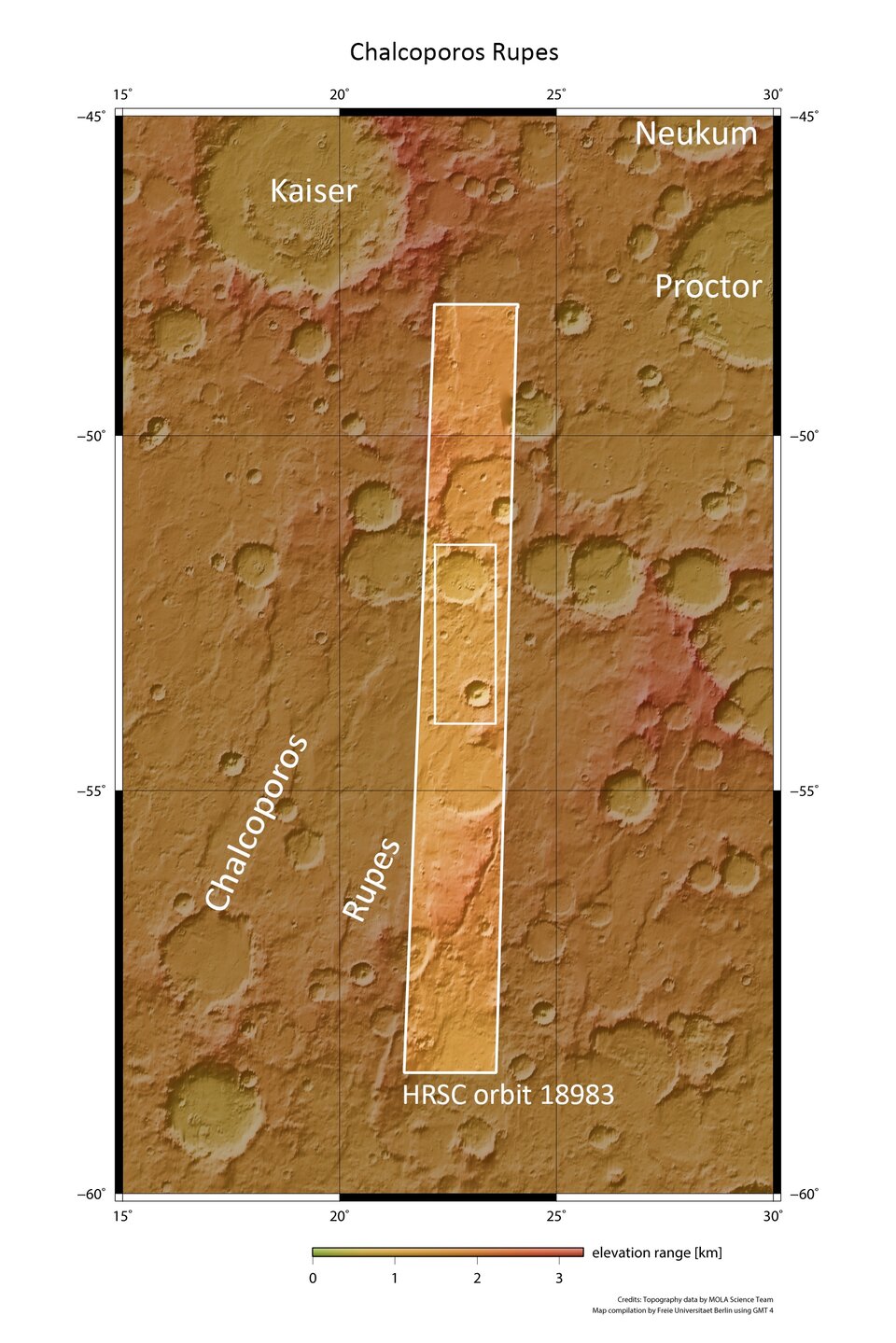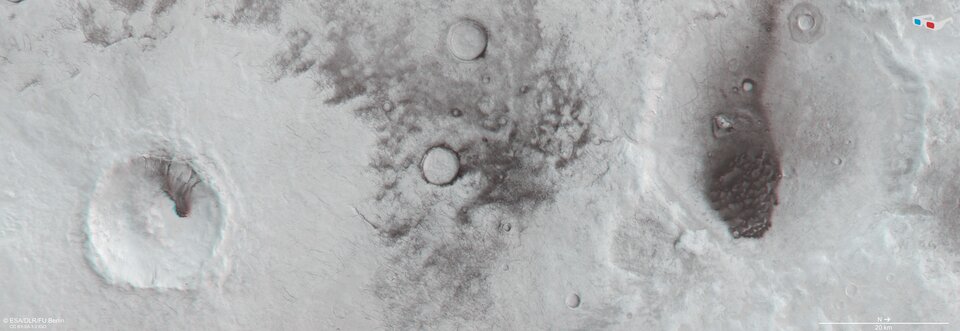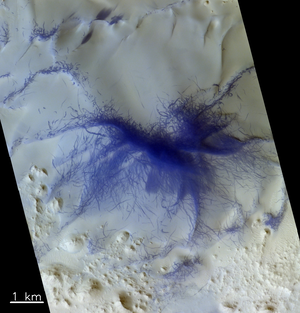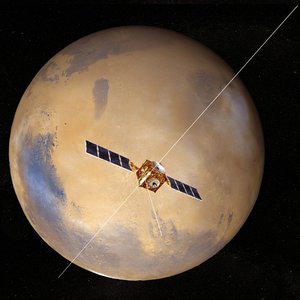Dark dust devil tracks on Mars
The winds of Mars are responsible for myriad features across the planet’s surface – including the dark dunes and wispy, filament-like streaks seen in this image from ESA’s Mars Express.
The intriguing features shown here are ‘dust devil’ tracks: as the Sun heats up the martian ground during the day, vortices form that lift warm air from near the surface, whipping up dust as they do so, shaping and sculpting it into swirling, column-shaped, tornado-like whirlwinds (click here for videos of dust devils made by NASA's Mars rover Spirit).

These dust devils range across the entire planet, lifting the top, brighter layer of dust from the surface, and leaving darker paths in their wake. They are most often seen in the martian spring and summer, lasting for a few months at most before their tracks become obscured by dust that has been buffeted around by storms and winds.
These Mars Express images show a curving, looping, crisscrossing web of dust devil tracks in the southern hemisphere of the planet, around an escarpment feature known as Chalcoporos Rupes. This area is covered in a thick layer of dust and is not unfrequently home to wind-related activity.
Areas of Mars that most regularly see dust devils include Amazonis Planitia, Argyre Planitia, Hellas Basin, and two impact craters that lie close to the region shown here: Proctor and Russell.
Proctor, Russell, and Chalcoproros Rupes are based in Mars’ Noachis quadrangle, an area so thickly pockmarked with impact craters that it is thought to be one of the oldest parts of the planet.
Both the craters visible in this frame boast dense, dark, eye-catching patches of rippling sand dunes, while the surrounding terrain is decorated with a broad web of dunes and signs of past dust devil activity.

Martian dust devils are similar to those seen on Earth in especially dry, arid, desert landscapes – but they are far larger. They can tower up to eight kilometres high on the Red Planet, creating paths that are hundreds of metres wide and stretch out for a few kilometres.
Their colossal size makes them highly effective at carrying dust high up into Mars’ atmosphere – in fact, these devils may lift as much material as a martian global dust storm does at its peak.

Such dust storms are immense and impressive. Mars Express captured signs of a burgeoning storm near Mars’ north pole in April of last year, highlighting an intense boundary between the planet’s usual, calm, ochre-hued surface and an incoming wall of dust clouds – and this was a somewhat modest dust storm compared to those that blanket the entirety of Mars and rage on for months.
Dust devils have been seen often on Mars, both by Mars Express and other missions – including the ESA-Roscosmos ExoMars Trace Gas Orbiter, which recently imaged an impressive pattern of dust devil tracks in the Terra Sabaea region of Mars that may be the result of hundreds or even thousands of small martian tornadoes coming together and leaving their mark on the planet’s surface.
The Trace Gas Orbiter will be joined by a rover – recently named Rosalind Franklin – and a surface science platform, due to launch in 2020. These will allow the ExoMars mission to explore the Red Planet in even greater detail in coming years.








